-
 Bitcoin
Bitcoin $107,341.7259
0.15% -
 Ethereum
Ethereum $2,438.6204
0.70% -
 Tether USDt
Tether USDt $1.0003
-0.02% -
 XRP
XRP $2.1866
1.94% -
 BNB
BNB $649.0952
0.36% -
 Solana
Solana $150.9602
5.63% -
 USDC
USDC $0.9999
0.00% -
 TRON
TRON $0.2742
0.40% -
 Dogecoin
Dogecoin $0.1645
1.93% -
 Cardano
Cardano $0.5669
1.18% -
 Hyperliquid
Hyperliquid $37.8286
4.19% -
 Bitcoin Cash
Bitcoin Cash $491.4669
-2.74% -
 Sui
Sui $2.8150
3.06% -
 Chainlink
Chainlink $13.4184
2.91% -
 UNUS SED LEO
UNUS SED LEO $9.0809
0.27% -
 Avalanche
Avalanche $18.0295
2.60% -
 Stellar
Stellar $0.2396
1.19% -
 Toncoin
Toncoin $2.8587
0.13% -
 Shiba Inu
Shiba Inu $0.0...01160
2.59% -
 Litecoin
Litecoin $86.4192
1.45% -
 Hedera
Hedera $0.1486
1.19% -
 Monero
Monero $308.4324
0.87% -
 Polkadot
Polkadot $3.4202
1.43% -
 Bitget Token
Bitget Token $4.6436
-0.34% -
 Dai
Dai $0.9998
-0.02% -
 Ethena USDe
Ethena USDe $1.0002
0.00% -
 Uniswap
Uniswap $7.1527
3.29% -
 Pi
Pi $0.5357
-8.45% -
 Pepe
Pepe $0.0...09588
4.61% -
 Aave
Aave $259.9759
0.81%
How to judge the trend continuity when the KDJ indicator continues to hover above 80?
When the KDJ indicator stays above 80 in crypto markets, it may signal strong bullish momentum, but traders should watch for crossovers, price action, and volume to determine trend continuity or potential reversal.
Jun 29, 2025 at 11:14 am
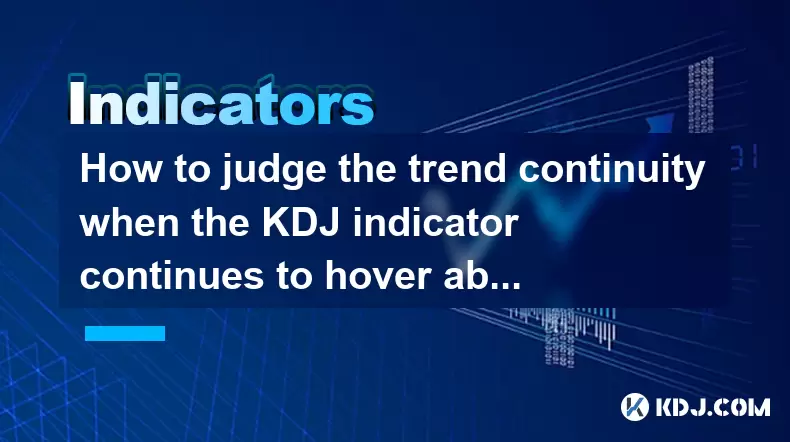
Understanding the KDJ Indicator and Its Components
The KDJ indicator, also known as the stochastic oscillator, is a momentum-based technical analysis tool that helps traders identify overbought or oversold conditions in the market. It consists of three lines: the K line, the D line, and the J line. The K line represents the fast stochastic value, while the D line is the moving average of the K line. The J line reflects the divergence between the K and D lines. When the KDJ remains consistently above 80, it signals that the asset may be overbought, but this does not necessarily mean a reversal is imminent.
Interpreting Overbought Conditions in Cryptocurrency Markets
In cryptocurrency trading, prices can remain in overbought territory for extended periods during strong uptrends. When the KDJ indicator continues to hover above 80, it's crucial to assess whether this condition aligns with the broader trend. If the price is still rising and maintaining momentum, the overbought level may indicate strength rather than exhaustion. However, if the price begins to stall or consolidate while the KDJ remains elevated, it could suggest weakening bullish momentum and an impending correction.
Evaluating Trend Continuity Using KDJ Crossovers
One effective method to determine whether the trend will continue is to monitor crossovers between the K and D lines. In an uptrend where the KDJ is above 80, if the K line remains above the D line without crossing below, it suggests that bullish control persists. Conversely, if the K line crosses below the D line while both are still above 80, it may signal a bearish divergence and a potential trend reversal. Traders should pay close attention to these crossovers as they often precede significant price movements.
Combining KDJ with Price Action Analysis
To accurately judge trend continuity, it’s essential to combine the KDJ indicator with price action analysis. Look for signs such as higher highs and higher lows in the price chart, which confirm an ongoing uptrend. Additionally, observe candlestick patterns like bullish engulfing or hammer formations that reinforce buying pressure. If the price continues forming bullish patterns while the KDJ stays above 80, it supports the idea that the trend has room to run. On the other hand, indecision candles or bearish reversals may warn of an upcoming pullback.
Monitoring Volume and Other Confirmatory Indicators
Volume plays a critical role in confirming the validity of a trend when the KDJ is in overbought territory. Increasing volume during rallies supports the continuation of the uptrend, whereas declining volume suggests waning interest from buyers. Furthermore, integrating other indicators like moving averages or RSI (Relative Strength Index) can provide additional context. For example, if the RSI is also showing overbought readings but hasn’t started to decline, it reinforces the idea that the trend may persist.
Practical Steps to Assess Trend Continuity with KDJ Above 80
- Identify whether the price is in a clear uptrend by observing swing highs and lows
- Check for consistency between KDJ levels and price movement
- Watch for K line and D line crossovers within the overbought zone
- Analyze candlestick patterns for confirmation of continued buying pressure
- Evaluate volume trends to ensure they support the current direction
- Cross-reference with other indicators like RSI or moving averages for confluence
Frequently Asked Questions
Q: Can the KDJ indicator alone be used to make trading decisions?
A: While the KDJ provides valuable insights into overbought and oversold conditions, relying solely on it can lead to false signals. It is best used in conjunction with other tools like price action, volume, and complementary indicators for more reliable results.
Q: What should I do if the KDJ is above 80 but the price keeps rising?
A: This scenario typically indicates strong bullish momentum. As long as the K line remains above the D line and price action confirms the uptrend, it may be safe to hold or even add to long positions cautiously.
Q: How long can the KDJ stay above 80 in a trending market?
A: There is no fixed duration, as crypto markets can sustain overbought conditions for varying lengths depending on sentiment and volume. The key is to monitor price behavior and look for early signs of reversal rather than expecting a specific time limit.
Q: Should I always sell when KDJ reaches 80?
A: No. Reaching 80 simply indicates overbought status, not an automatic sell signal. Selling should be based on confluence factors such as bearish crossovers, reversal patterns, or weakening volume, not just the KDJ hitting a threshold.
Disclaimer:info@kdj.com
The information provided is not trading advice. kdj.com does not assume any responsibility for any investments made based on the information provided in this article. Cryptocurrencies are highly volatile and it is highly recommended that you invest with caution after thorough research!
If you believe that the content used on this website infringes your copyright, please contact us immediately (info@kdj.com) and we will delete it promptly.
- BONK Price Prediction: Is the Meme Coin Ready to Pop?
- 2025-06-29 14:30:12
- Bitcoin Funding Rates, Short Squeeze, and the Price Decline: A Perfect Storm?
- 2025-06-29 14:50:12
- Bitcoin Cash (BCH): Explosive Move or False Dawn?
- 2025-06-29 15:10:12
- Chainlink, Lightchain AI, and Presale Hype: What's Real?
- 2025-06-29 15:10:12
- Pi Coin Price Prediction Today: Navigating Uncertainty
- 2025-06-29 14:55:12
- Meme Coins: Buy Now, Hold Forever? (Maybe)
- 2025-06-29 14:30:12
Related knowledge
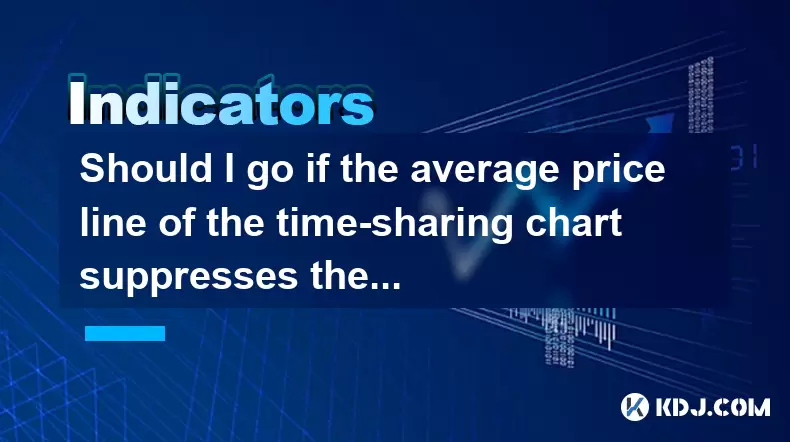
Should I go if the average price line of the time-sharing chart suppresses the rebound?
Jun 28,2025 at 05:14pm
Understanding the Time-Sharing Chart and Average Price LineThe time-sharing chart is a real-time chart used in cryptocurrency trading to visualize price movements over short intervals, typically within a single trading day. It provides traders with insights into intraday volatility and momentum. The average price line, often calculated as a moving avera...
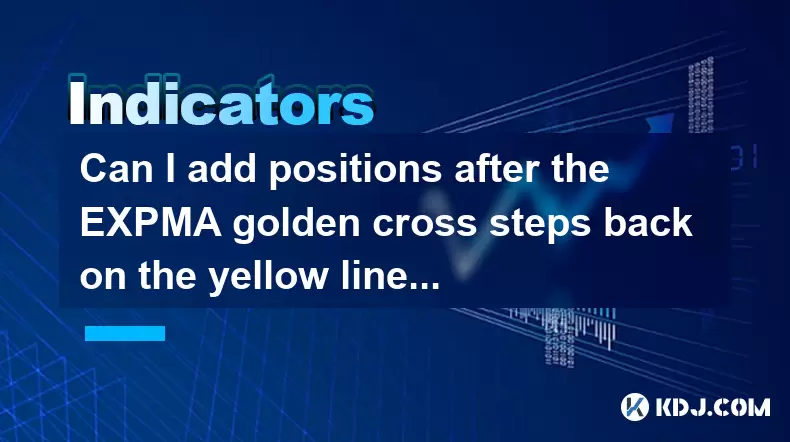
Can I add positions after the EXPMA golden cross steps back on the yellow line?
Jun 28,2025 at 11:57am
Understanding the EXPMA Indicator and Its RelevanceThe EXPMA (Exponential Moving Average) is a technical analysis tool used by traders to identify trends and potential entry or exit points in financial markets, including cryptocurrency trading. Unlike simple moving averages, EXPMA gives more weight to recent price data, making it more responsive to new ...

How to operate the next day after the daily limit is released with huge volume?
Jun 28,2025 at 12:35pm
Understanding the Daily Limit and Its ReleaseIn cryptocurrency trading, daily limits are often set by exchanges to manage volatility or during periods of high market activity. These limits can restrict how much an asset's price can fluctuate within a 24-hour period. When the daily limit is released, it typically means that the price cap has been lifted,...
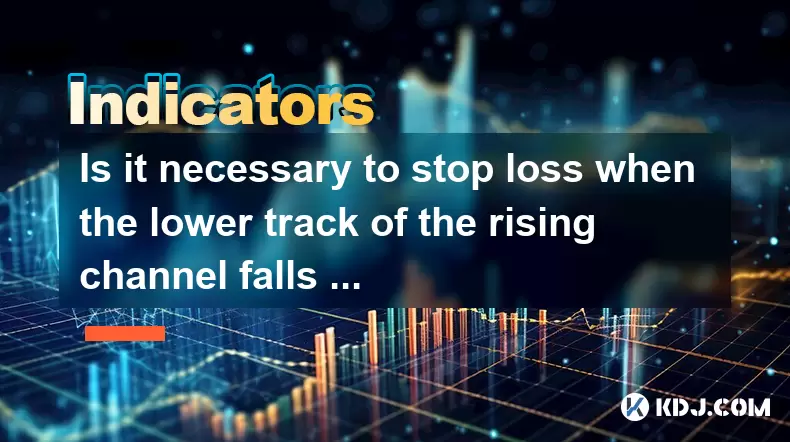
Is it necessary to stop loss when the lower track of the rising channel falls below?
Jun 28,2025 at 05:29pm
Understanding the Rising Channel PatternThe rising channel pattern is a popular technical analysis tool used by traders to identify potential upward trends in asset prices. It consists of two parallel lines: an upper resistance line and a lower support line, both sloping upwards. The price action typically oscillates between these boundaries, offering o...
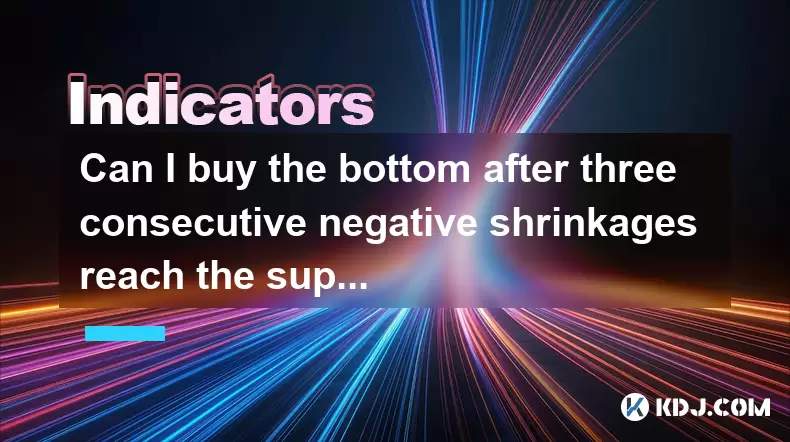
Can I buy the bottom after three consecutive negative shrinkages reach the support level?
Jun 29,2025 at 03:43am
Understanding the Context of Three Consecutive Negative ShrinkagesIn the cryptocurrency market, price patterns are often analyzed to predict potential reversals or continuations. A negative shrinkage refers to a situation where the candlestick body becomes smaller in a downtrend, indicating weakening selling pressure. When this happens three times conse...
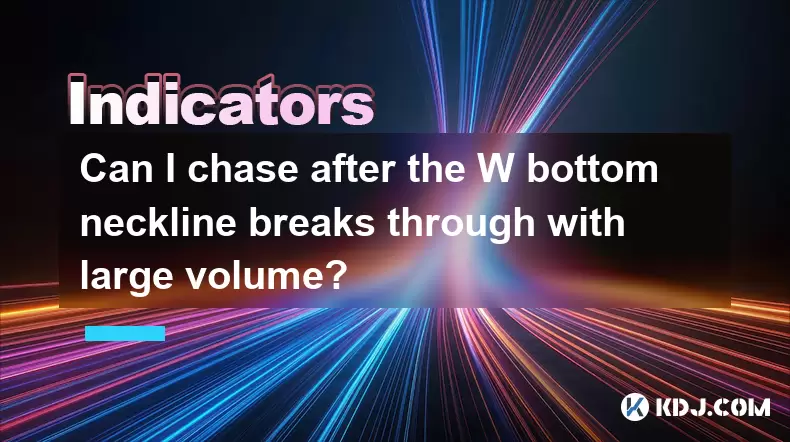
Can I chase after the W bottom neckline breaks through with large volume?
Jun 28,2025 at 07:28am
Understanding the W Bottom Pattern in Cryptocurrency TradingThe W bottom pattern is a common technical analysis formation used by traders to identify potential bullish reversals. In cryptocurrency markets, this pattern typically appears after a downtrend and signals that the selling pressure may be diminishing. The structure of the W bottom includes two...

Should I go if the average price line of the time-sharing chart suppresses the rebound?
Jun 28,2025 at 05:14pm
Understanding the Time-Sharing Chart and Average Price LineThe time-sharing chart is a real-time chart used in cryptocurrency trading to visualize price movements over short intervals, typically within a single trading day. It provides traders with insights into intraday volatility and momentum. The average price line, often calculated as a moving avera...

Can I add positions after the EXPMA golden cross steps back on the yellow line?
Jun 28,2025 at 11:57am
Understanding the EXPMA Indicator and Its RelevanceThe EXPMA (Exponential Moving Average) is a technical analysis tool used by traders to identify trends and potential entry or exit points in financial markets, including cryptocurrency trading. Unlike simple moving averages, EXPMA gives more weight to recent price data, making it more responsive to new ...

How to operate the next day after the daily limit is released with huge volume?
Jun 28,2025 at 12:35pm
Understanding the Daily Limit and Its ReleaseIn cryptocurrency trading, daily limits are often set by exchanges to manage volatility or during periods of high market activity. These limits can restrict how much an asset's price can fluctuate within a 24-hour period. When the daily limit is released, it typically means that the price cap has been lifted,...

Is it necessary to stop loss when the lower track of the rising channel falls below?
Jun 28,2025 at 05:29pm
Understanding the Rising Channel PatternThe rising channel pattern is a popular technical analysis tool used by traders to identify potential upward trends in asset prices. It consists of two parallel lines: an upper resistance line and a lower support line, both sloping upwards. The price action typically oscillates between these boundaries, offering o...

Can I buy the bottom after three consecutive negative shrinkages reach the support level?
Jun 29,2025 at 03:43am
Understanding the Context of Three Consecutive Negative ShrinkagesIn the cryptocurrency market, price patterns are often analyzed to predict potential reversals or continuations. A negative shrinkage refers to a situation where the candlestick body becomes smaller in a downtrend, indicating weakening selling pressure. When this happens three times conse...

Can I chase after the W bottom neckline breaks through with large volume?
Jun 28,2025 at 07:28am
Understanding the W Bottom Pattern in Cryptocurrency TradingThe W bottom pattern is a common technical analysis formation used by traders to identify potential bullish reversals. In cryptocurrency markets, this pattern typically appears after a downtrend and signals that the selling pressure may be diminishing. The structure of the W bottom includes two...
See all articles

























































































